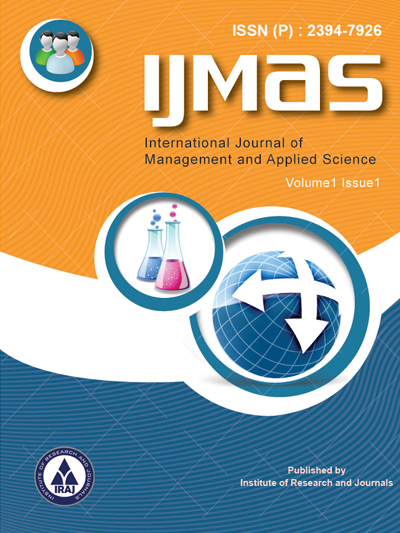Publish In |
International Journal of Management and Applied Science (IJMAS)-IJMAS |
 Journal Home Volume Issue |
||||||||
Issue |
Volume-1,Issue-9 ( Oct, 2015 ) | |||||||||
Paper Title |
The Role Of The Silk Road In The Migration And Settlement Of The Chinese Hui Nationality In The Yellow River Valley Since The Mid-7th Century | |||||||||
Author Name |
Abdelhadi Halawa, Zheng Ma | |||||||||
Affilition |
High-End Foreign Expert & Lead Researcher “The Globalization and localization of Islamic Culture Research Project” Center for Yellow River Civilization and Sustainable Development Henan University, Kaifeng, Henan Province, China Associate Professor, Millersville University, Millersville, PA, USA “The Globalization and localization of Islamic Culture Research Project” Center for Yellow River Civilization and Sustainable Development Associate Professor, Henan University, Kaifeng, He | |||||||||
Pages |
4-12 | |||||||||
Abstract |
The Muslim Hui people, are the second largest minority ethnic group in China. Some of the ancestors of the Hui people were Arab, Persian, Turkish, and Central Asian Muslim merchants who migrated to the northeastern region of China in the middle of the 7th century crossing the rugged mountains of Central Asia and traversing the Silk Road overland. While some other Muslim ancestors sailed through the Persian Gulf and Arabian Sea to eventually settle down in the coastal cities of the southeast of China during the Tang and Song Dynasties. The Hui people are distinguished from the other Chinese nationalities by their practice of Islam as a religion and a comprehensive way of life. Through trade and intermarriage, the mélange of the Hui people with other Chinese nationalities facilitated their adoption of the culture and some of living practices of the major ethnic group, the Han Nationality. This paper is aimed to examine the history, evolution, culture, and major contributions of the Hui people to the development of the Yellow River Civilization. Keywords: Silk Road, Hui Nationality, Yellow River, Islam in China, Chinese Culinary Culture, Han, Mongolian, and Uygur Nationalities. | |||||||||
| View Paper | ||||||||||